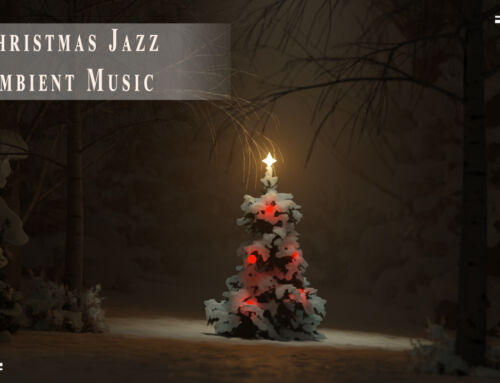 Choosing the right Point of View can make or break your story, and knowing which to use is more art than science.
Choosing the right Point of View can make or break your story, and knowing which to use is more art than science.
It’s a critical skill for anyone writing fiction, and once understood it will elevate your writing to a new level.
When writers talk of Point of View (PoV) they’re referring to the narrative viewpoint of the story. PoV is how the story is told; the viewpoint of the narrator. There are three basic forms of PoV – one of which is almost never used – plus the odd subtypes or special case.
The three main forms are:
First person.
Second person.
Third person.
taking their names from the pronouns used by the narrator. Each has their own advantages and disadvantages, and every story may be better suited to one point of view than another.
First Out of the Blocks
With first person Point of View, the narrative uses the first person pronoun I, and the story is told from the point of view of the narrator. For example:
“I jumped. I felt the air whip my face, a bracing touch that woke me up. I remembered I still had my shoes on a second before I hit the water.”
First person PoV is a great choice when you want to draw your reader into the story, and to make them feel close to the character narrating it. The character’s personality can shine through on the pages, and the reader gets an acute sense of the narrator that is almost impossible with other PoVs. Imagine a novel like J.D. Salinger’s Catcher in the Rye without the strong voice of Holden Caulfield narrating the story. It would be almost unrecognisable written in third person PoV, and weaker by far.
Stories that centre on a single character or a few principle characters are ripe for first person PoV, but ones with a large cast of major characters – George R. R. Martin’s A Song of Ice and Fire, for example – are likely better suited to third person PoV.
You’re Second
 Second person PoV is where the narrative viewpoint is that of the reader. It’s easy to spot as it uses the pronoun “you” for the narrative. For example:
Second person PoV is where the narrative viewpoint is that of the reader. It’s easy to spot as it uses the pronoun “you” for the narrative. For example:
“You open the door with a sense of trepidation, and find a dragon on the other side. It looks very much awake.”
The most well known example of 2nd person PoV is the Choose Your Own Adventure series of books. Outside of this niche, second person is rarely used in fiction. It can serve as a useful example for writing lessons, challenges, and short stories. Because it’s so very different to the other PoVs, reading something written in second person can feel quite strange – as though there’s something not quite right with it. Experienced authors don’t usually touch this viewpoint, and with good reason. If you’re considering writing your next novel in second person, the best advice is: don’t!
Third Time Around
Third person point of view is where things get a little more complicated. Stories written in third person PoV are narrated using third person pronouns: he, she, they. Unlike first person PoV, the narrator sits outside of the action as an observer. There are two forms of third person PoV: third person limited, and third person omniscient. Each has its own merits (and disadvantages).
The All-Powerful
 With third person omniscient PoV, the narrator is all-knowing and has access to all of the characters’ thoughts and feelings. Countless classic novels have been written in this narrative mode, from authors such as Jane Austen, Charles Dickens, and Leo Tolstoy. The narrator is anonymous (unlike first person PoV, for example) and can share as much or as little information with the reader as the author likes.
With third person omniscient PoV, the narrator is all-knowing and has access to all of the characters’ thoughts and feelings. Countless classic novels have been written in this narrative mode, from authors such as Jane Austen, Charles Dickens, and Leo Tolstoy. The narrator is anonymous (unlike first person PoV, for example) and can share as much or as little information with the reader as the author likes.
While stories written in first person can shine with a unique narrator’s voice, third person omniscient offers a more distant perspective; the narrator’s no longer a single person, but a disembodied, anonymous voyeur. The narrator’s personality can shine through to some extent, but it’s far more difficult to accomplish than with first person PoV which is naturally suited to portraying facets of the narrator’s personality.
Limited (But Also Limitless)
Third person limited omniscient- sometime called close third person – uses third person pronouns, just like omniscient. The difference between the two modes is that the narrator in limited PoV has limited knowledge. Instead of all-knowing, the narrator remains close to a single character. The character’s thoughts, feelings, and knowledge are all available to the narrator (although the author doesn’t have to share them). The thoughts of other characters remain unknowable to the narrator, however. Limited PoV is often likened to the “over the shoulder” camera shot in films. The narrator is perched on the character’s shoulder and therefore drawing the reader in closer to the action than with third person omniscient.
Choosing the Right PoV
Some authors always write using the same Point of View, while others experiment or pick a PoV they believe is right for that particular story. Some genres of fiction may mostly use one particular PoV,

although there are always exceptions. So how do you pick the right PoV to use?
Genre is a good indicator. If your story’s genre typically uses a particular PoV, then you should probably stick to that unless you’re an experienced writer. But if the genre doesn’t favour a single PoV, then it’s purely an authorial choice. So how do you make that choice? What do you need to consider?
First is your own preference: do you favour a particular PoV? If so, you can probably make that work for you. This may be especially important for authors starting out. There’s a lot to learn, so trying an unfamiliar or uncomfortable PoV for your first novel may not be best for you.
If genre or your own preferences don’t suggest a particular PoV then it’s time to think about your story and your characters. Does your protagonist have such a strong voice that they could shape your story? First person might be the way to bring out that voice and make your story shine. A large cast of viewpoint characters is likely well-suited to third person PoV. But how close do you want to get your characters? A sweeping epic might be suited to third person omniscient, but a smaller cast with few – but memorable – viewpoint characters could be ripe for third person limited.
These, of course, are only suggestions as there are no real rules for choosing a narrative viewpoint. Ultimately, as the writer the decision is yours. But if you’re unsure you can always pick a chapter, write it in two different PoVs and compare the results. Point of View may seem like a daunting skill to master, but as with so many facets of creative writing, time and practice will help you hone these skills.
For further key insights into story craft and fiction writing – please see Story Craft Section of the website.




Leave A Comment